Museums are not just places to admire art but often works of art themselves. From strikingly modern buildings to ornate historic structures, museum architecture can be as captivating as the masterpieces they hold. In this article, we’ve gathered a collection of the most beautiful museum architecture worldwide.
These stunning photos capture some of the world’s most beautiful museums’ intricate details, unique designs, and grandeur. From the futuristic curves of the Guggenheim Bilbao to the neoclassical columns of the Louvre, these museums are as much a feast for the eyes as the art within them.
But beyond just their beauty, these museums also tell a story of cultural and architectural history. They are a testament to the creativity and skill of architects and the importance of preserving and celebrating our shared cultural heritage.
Whether you love art or appreciate breathtaking architecture, these photos inspire and delight you. So come along on a journey through the world’s most beautiful museums and be transported to a world of wonder and artistry.
Please share this list with your friends and family and help spread your appreciation for museum architecture and the cultural treasures they hold.
#1 Shanghai Museum of Astronomy, China
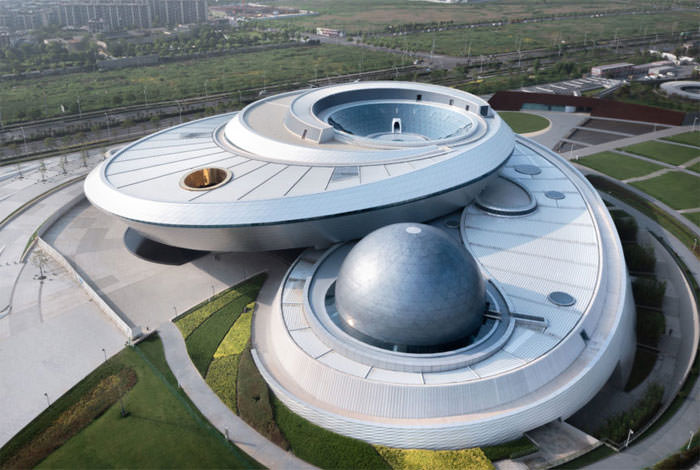
The Shanghai Museum of Astronomy, located in the vibrant city of Shanghai, China, is a remarkable institution dedicated to the rich history and advancements in the field of astronomy. Established in 2000, the museum spans over 30,000 square meters and houses a stunning collection of artifacts, exhibits, and interactive displays.
This museum, nestled in the heart of Shanghai, offers visitors an immersive experience into the world of astronomy. It showcases the fascinating journey of Chinese astronomy, dating back to ancient times, highlighting the achievements of Chinese astronomers, and their contributions to the global understanding of the cosmos.
A key attraction of the museum is the planetarium, which features state-of-the-art technology, projecting captivating shows about the universe and celestial events. The museum also boasts a solar telescope, allowing visitors to safely observe the sun and its various phenomena. Apart from these, the museum offers educational programs and workshops, making it a perfect destination for students, researchers, and astronomy enthusiasts.
#2 State Historical Museum, Russia
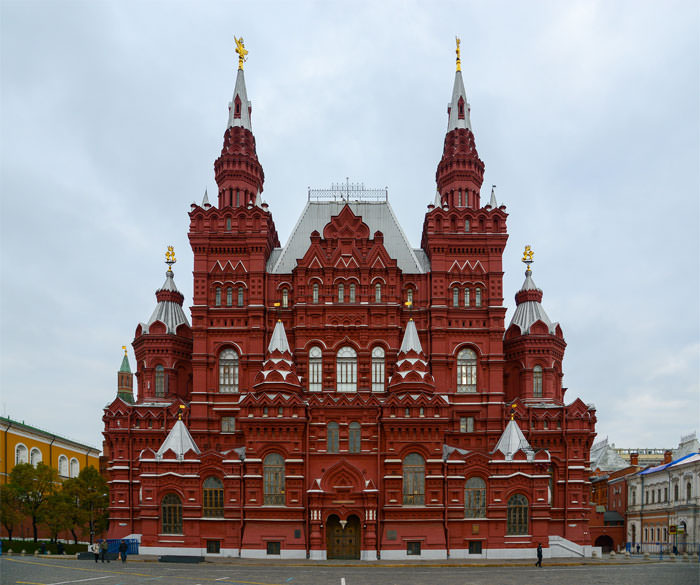
The State Historical Museum, situated in the heart of Moscow, Russia, is a magnificent institution that showcases the rich and diverse history of the country. Founded in 1872 by Ivan Zabelin and Alexei Uvarov, the museum was officially opened to the public in 1883. It occupies a stunning red-brick building, designed by architect Vladimir Sherwood, located on the Red Square, adjacent to the iconic Saint Basil's Cathedral and the Kremlin.
The museum's vast collection, comprising over 4 million artifacts, spans from the ancient Stone Age to the modern era, chronicling the cultural, social, and political history of Russia. The exhibits showcase archeological findings, ancient manuscripts, rare coins, traditional costumes, and an array of historical artwork, offering visitors a comprehensive insight into the nation's past.
Among the museum's highlights are the Scythian gold artifacts, a replica of the famous Amber Room, and the collection of Russian icons. The museum regularly hosts temporary exhibitions and educational programs, ensuring a dynamic and engaging experience for visitors of all ages.
#3 Zeitz MOCAA, South Africa

Zeitz Museum of Contemporary Art Africa (Zeitz MOCAA) is a groundbreaking institution dedicated to contemporary art from Africa and its diaspora. Located in the vibrant city of Cape Town, South Africa, the museum opened its doors in September 2017. Housed in a former grain silo complex on the V&A Waterfront, the impressive structure was transformed into a stunning architectural marvel by British architect Thomas Heatherwick.
The museum spans over nine floors, with 6,000 square meters of exhibition space, making it the largest museum of contemporary African art in the world. The Zeitz MOCAA boasts an extensive collection of cutting-edge artwork that showcases the diverse and innovative talents of African artists. The museum aims to provide a platform for African voices, fostering dialogue and understanding of the continent's rich artistic heritage and cultural nuances.
Some of the museum's key features include the atrium, which features a striking, cathedral-like interior carved out of the original grain silos, and the rooftop sculpture garden, offering breathtaking views of Cape Town's iconic Table Mountain and the surrounding harbor. Apart from its permanent collection, Zeitz MOCAA hosts temporary exhibitions, artist residencies, and educational programs, engaging the local community and international visitors alike.
#4 The Museum of Islamic Art, Qatar
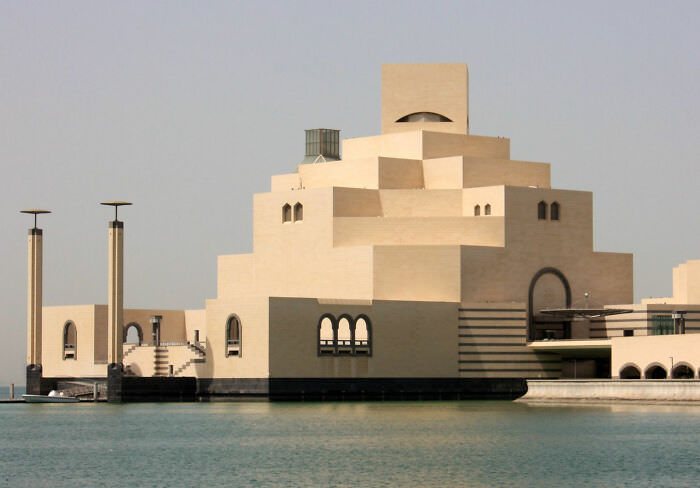
The Museum of Islamic Art (MIA), located in Doha, Qatar, is an awe-inspiring institution that celebrates the rich artistic heritage of the Islamic world. Inaugurated in 2008, the museum is situated on a purpose-built island off the city's Corniche, offering stunning panoramic views of Doha's skyline. The striking building was designed by the renowned Chinese-American architect I. M. Pei, who drew inspiration from ancient Islamic architecture to create a modern masterpiece.
The MIA houses a remarkable collection that spans over 1,400 years of Islamic art, showcasing the creative achievements of diverse cultures from Spain to India. The museum's exhibits feature a wide array of objects, including ceramics, textiles, metalwork, jewelry, glass, and precious manuscripts, representing the finest craftsmanship from various Islamic periods.
Some of the museum's highlights include the intricately decorated Mamluk glass lamps, the beautifully illuminated pages of the Blue Qur'an, and the famous Pearl Carpet of Baroda, embroidered with over a million pearls and precious stones. The MIA also hosts temporary exhibitions, educational programs, and cultural events, offering an immersive experience for visitors of all ages.
#5 Erawan Museum, Thailand
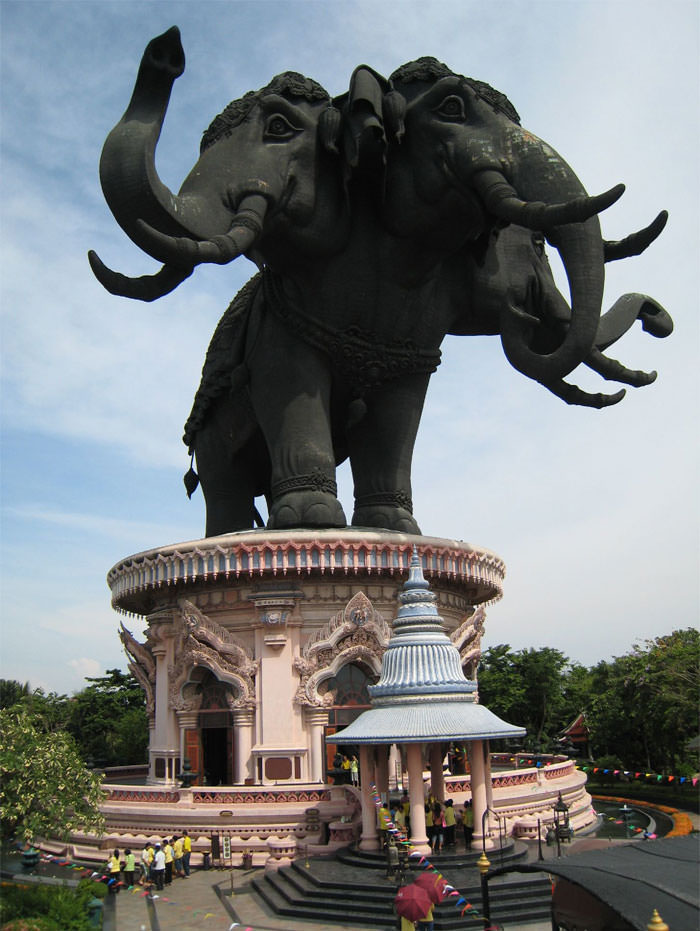
The Erawan Museum, located in Samut Prakan, just outside of Bangkok, Thailand, is a one-of-a-kind institution that combines art, religion, and culture in a truly unique setting. Established in 2003 by Lek Viriyaphant, a Thai millionaire and art patron, the museum was created to preserve and showcase Thai cultural heritage for future generations.
The museum's most striking feature is its architecture, designed in the form of a massive three-headed elephant, known as Erawan, which symbolizes the Hindu god Indra's celestial vehicle. Standing at 44 meters tall and weighing 250 tons, the bronze elephant statue rests on a 15-meter high pedestal, making it an unmistakable landmark.
The Erawan Museum consists of three levels, each representing a different realm of Thai cosmology: the underworld, the human world, and the heavens. The ground floor, or underworld, displays a vast collection of antiques, ceramics, and artifacts from various Southeast Asian cultures. The second level, representing the human world, showcases traditional Thai furniture and art pieces, while the top level, symbolizing the heavens, is an exquisite chamber adorned with intricate stained glass that depicts the cosmos.
#6 Salvador Dali Museum, U.S.
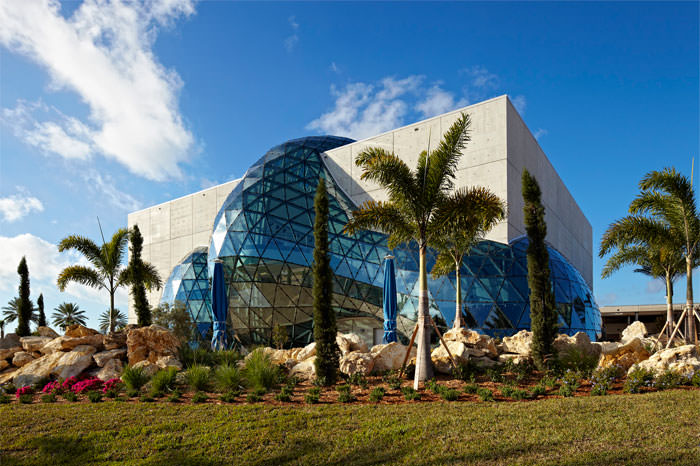
Edicated to the life and work of the renowned Spanish surrealist artist, Salvador Dali. Established in 1982 by philanthropists A. Reynolds Morse and Eleanor R. Morse, who were avid collectors of Dali's work, the museum houses the largest collection of Dali's art outside of Europe.
In 2011, the museum moved to a new, modern building designed by architect Yann Weymouth, featuring a stunning glass structure called the "Enigma," which is inspired by Dali's distinctive surrealist style. The new facility provides ample space for showcasing the artist's vast collection, which includes over 2,000 works, ranging from paintings and sculptures to photographs and personal items.
The museum's impressive collection encompasses key pieces from various stages of Dali's career, such as the iconic melting clocks in "The Persistence of Memory" and the mesmerizing dream-like landscapes in "The Hallucinogenic Toreador." The museum also delves into Dali's lesser-known explorations in science, mathematics, and religion, showcasing the full range of his artistic genius.
In addition to the permanent collection, the Salvador Dali Museum hosts temporary exhibitions, educational programs, and cultural events, engaging the local community and visitors alike. The museum is a must-visit destination for art enthusiasts and anyone intrigued by the surreal world of Salvador Dali. It offers a unique opportunity to explore the mind and creations of one of the most influential and enigmatic artists of the 20th century, providing a fascinating and immersive experience in the heart of Florida.
#7 Guggenheim Bilbao Museum, Spain
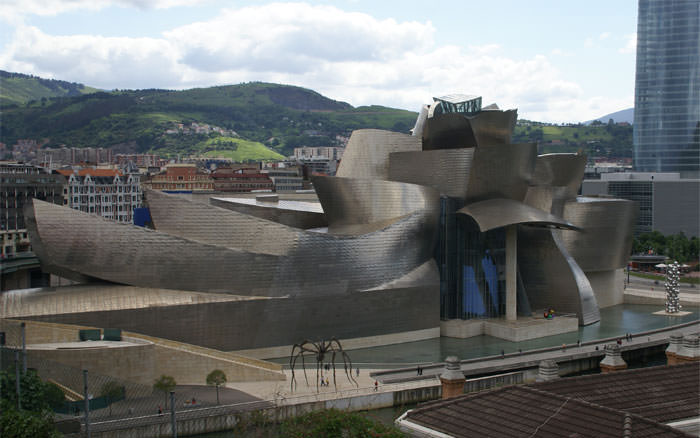
The Guggenheim Bilbao Museum, situated in the city of Bilbao, Spain, is a world-renowned institution that has redefined the landscape of contemporary art and architecture. Opened in 1997, the museum was designed by the celebrated Canadian-American architect Frank Gehry, who masterfully created an iconic structure that combines innovative design with a dynamic relationship to its urban surroundings.
Clad in shimmering titanium, the Guggenheim Bilbao's unique, curvilinear form has become a symbol of the city's transformation and a testament to the power of architecture as a catalyst for urban renewal. The museum is located along the Nervión River, with its impressive façade reflecting both the water and the surrounding cityscape, creating a mesmerizing visual experience.
The Guggenheim Bilbao houses a diverse collection of modern and contemporary art, featuring works from the mid-20th century to the present day. The museum showcases a variety of mediums, including painting, sculpture, photography, and installation art, with a focus on large-scale works and site-specific commissions. Some of the museum's most famous pieces include Richard Serra's monumental steel sculptures in "The Matter of Time" and Jeff Koons' whimsical "Puppy," a giant floral sculpture that greets visitors at the entrance.
The museum's rotating exhibitions and educational programs offer visitors an engaging and dynamic experience, with a strong emphasis on contemporary artistic practices and their relationship to the wider cultural context. A visit to the Guggenheim Bilbao is a must for art enthusiasts and architecture lovers alike, as it provides a unique opportunity to explore groundbreaking art and design in one of the world's most iconic museum buildings.
#8 Museo de Arte Tigre, Argentina
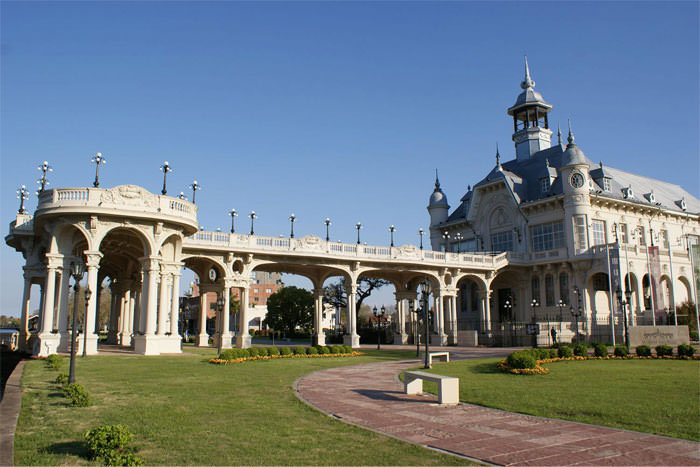
The Museo de Arte Tigre (MAT), located in Tigre, a picturesque town in the province of Buenos Aires, Argentina, is a remarkable institution that showcases a diverse collection of Argentine art. Housed in the beautifully restored Tigre Club building, an impressive Beaux-Arts structure built in 1912, the museum overlooks the scenic Paraná Delta, offering a unique setting for the appreciation of art.
Established in 2006, the Museo de Arte Tigre's collection focuses on Argentine figurative art from the late 19th century to the present day, featuring an array of paintings, sculptures, drawings, and prints. The museum's exhibits provide a comprehensive overview of the evolution of Argentine art, showcasing the work of prominent artists such as Benito Quinquela Martín, Xul Solar, Antonio Berni, and Raquel Forner, among others.
Visitors to the MAT can explore the museum's beautifully curated spaces while enjoying the stunning views of the surrounding delta landscape. The museum also hosts temporary exhibitions, workshops, and cultural events, ensuring a dynamic and engaging experience for guests of all ages.
In addition to its impressive art collection, the Museo de Arte Tigre is notable for its commitment to the conservation and restoration of its historic building, which serves as a testament to the town's rich cultural heritage. A visit to the MAT offers a unique opportunity to explore the world of Argentine art in a serene and picturesque setting, making it a must-visit destination for art lovers and travelers alike.
#9 National Museum of Qatar
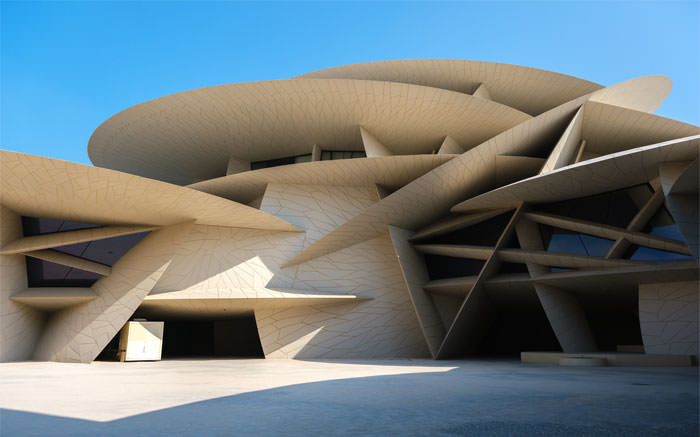
The National Museum of Qatar, situated in the heart of Doha, is an architectural marvel and a cultural institution that celebrates the rich history, heritage, and future of Qatar. Designed by the renowned French architect Jean Nouvel, the museum's striking structure is inspired by the desert rose, a natural formation of crystallized minerals found in the region's arid landscape. The museum opened its doors to the public in 2019, quickly becoming a symbol of Qatar's commitment to preserving its cultural legacy and showcasing its dynamic identity.
The museum's collection is spread over 11 galleries, offering visitors an immersive journey through the country's past, present, and future. The exhibits explore various aspects of Qatari culture, history, and the natural environment, featuring archaeological artifacts, traditional crafts, and multimedia installations. Among the highlights of the museum are the Pearl Carpet of Baroda, the 19th-century Qatari Palace of Sheikh Abdullah bin Jassim Al Thani, and a gallery dedicated to the country's booming natural gas and oil industries.
In addition to its permanent collection, the National Museum of Qatar hosts temporary exhibitions, educational programs, and cultural events, providing a diverse and engaging experience for visitors of all ages. The museum also features beautiful outdoor spaces, including a lagoon, desert garden, and a park that showcases native flora.
#10 Milwaukee Art Museum, U.S.
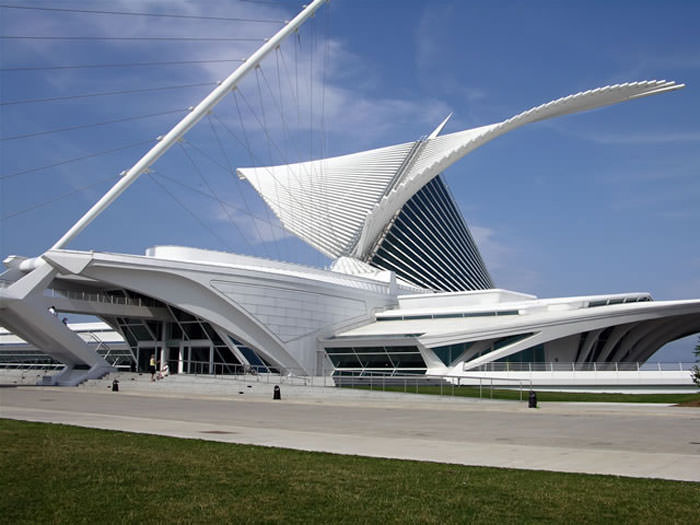
The Milwaukee Art Museum (MAM), located in Milwaukee, Wisconsin, U.S., is a renowned cultural institution that houses an extensive collection of over 30,000 works of art, ranging from antiquities to contemporary pieces. Established in 1888, the museum has grown over the years, both in terms of its collection and its iconic architecture.
One of the most striking features of the Milwaukee Art Museum is the Quadracci Pavilion, designed by the celebrated Spanish architect Santiago Calatrava. Completed in 2001, the pavilion features a remarkable movable sunscreen, known as the Burke Brise Soleil, which resembles a bird's wings and has become a symbol of the city's skyline. The museum's campus also includes the Eero Saarinen-designed War Memorial Center and the David Kahler-designed addition.
The MAM's diverse collection covers various periods, styles, and cultures, including European, American, and Asian art. The museum's holdings feature masterpieces from prominent artists such as Georgia O'Keeffe, Pablo Picasso, and Andy Warhol, as well as works by lesser-known and emerging artists. The collection spans various mediums, including painting, sculpture, photography, and decorative arts.
#11 City of Arts and Sciences, Spain
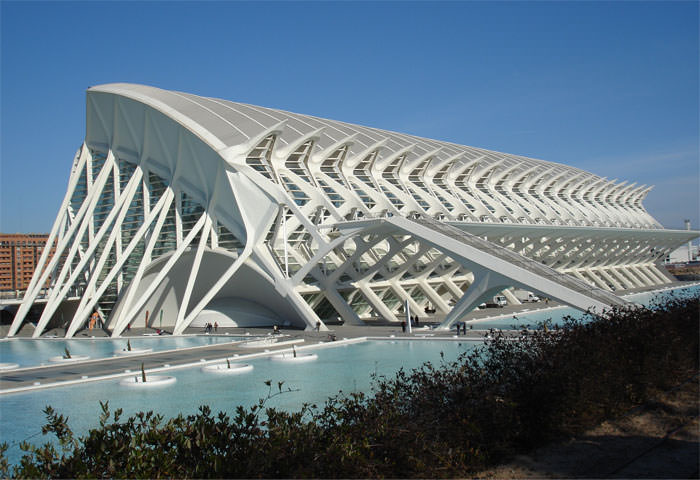
The City of Arts and Sciences, located in Valencia, Spain, is a spectacular cultural and architectural complex symbolizing the city's commitment to innovation, art, and science. Spanning over 350,000 square meters, the complex was designed by world-renowned architects Santiago Calatrava and Félix Candela, who masterfully combined futuristic design with a harmonious connection to the surrounding environment. Inaugurated in stages between 1998 and 2005, the City of Arts and Sciences has emerged as a must-visit destination for architecture enthusiasts, tourists, and locals alike.
The complex comprises several striking structures, each dedicated to a specific aspect of arts, culture, or science. The Hemisfèric is a stunning eye-shaped building that houses an IMAX cinema, a planetarium, and a laserium. The Prince Philip Science Museum is a visually striking interactive museum promoting the understanding and appreciation of science and technology. The Oceanogràfic is the largest aquarium in Europe, showcasing a diverse range of marine ecosystems and species from around the world. The Palau de les Arts Reina Sofia is a visually stunning opera house and performing arts center hosting a variety of events, including operas, concerts, and ballets. The Umbracle is a beautiful open-air gallery and landscaped walkway featuring contemporary sculptures and native plants. The Ágora is a versatile, covered plaza hosting a range of events, from concerts and exhibitions to sports competitions and conventions.
The City of Arts and Sciences is not just a collection of impressive buildings but a living, breathing cultural hub encouraging the exploration and appreciation of art, science, and nature. A visit to this iconic complex is a must for anyone traveling to Valencia, as it offers a unique opportunity to immerse oneself in the innovative spirit and creativity of this vibrant city.
#12 Museum of the Future, UAE
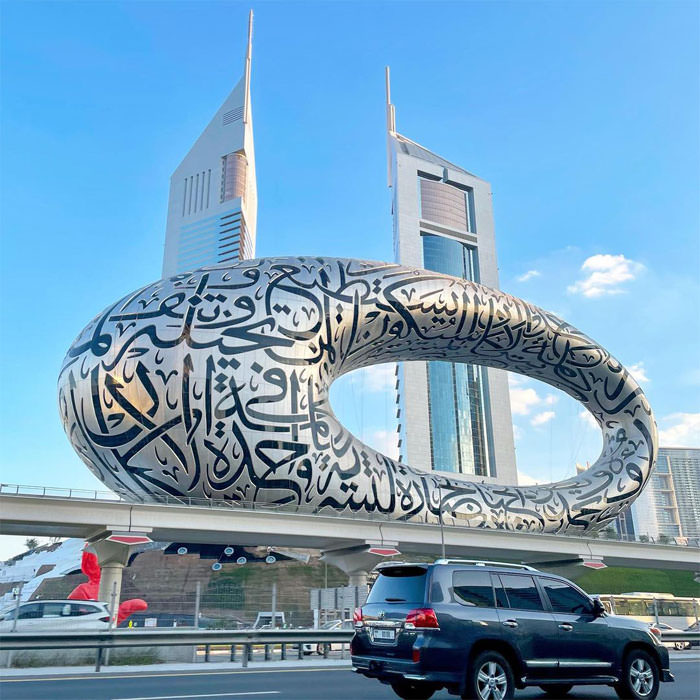
The Museum of the Future, located in Dubai, United Arab Emirates, is a groundbreaking cultural institution that embodies the city's commitment to innovation, technology, and forward-thinking design. The museum, which opened its doors in 2021, is not only a showcase for futuristic ideas and technologies but also serves as a hub for researchers, designers, and inventors to collaborate and develop innovative solutions to global challenges.
The museum's striking architecture, designed by architect Shaun Killa, features a unique torus-shaped structure with an elliptical void in the center, representing the unknown possibilities of the future. The exterior is adorned with intricate Arabic calligraphy, which seamlessly integrates traditional cultural elements with the building's futuristic design.
Inside the Museum of the Future, visitors are immersed in interactive exhibits that explore cutting-edge technologies and their potential impact on various aspects of human life, such as healthcare, education, and urban planning. The museum aims to inspire visitors to think critically about the future and the role technology can play in shaping a better, more sustainable world.
In addition to its exhibits, the Museum of the Future serves as a platform for dialogue and collaboration, hosting conferences, workshops, and events focused on fostering innovation and addressing global challenges. It is also home to an innovation center that supports research and development in areas like robotics, artificial intelligence, and sustainable technologies.
#13 Jewish Museum, Berlin
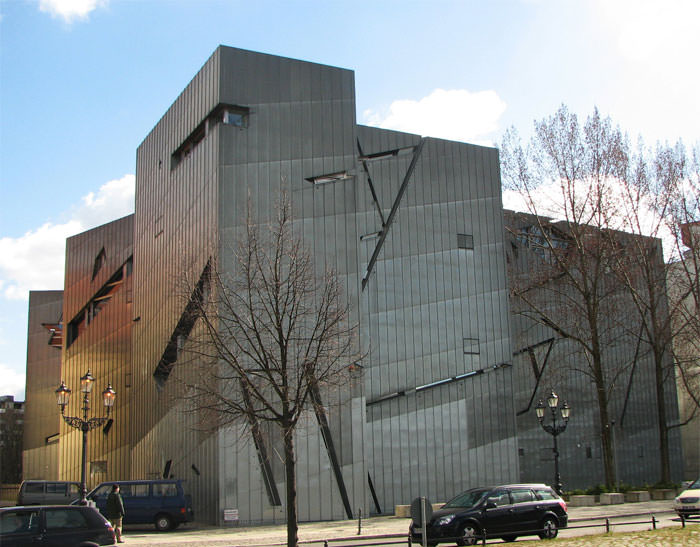
The Jewish Museum Berlin, located in the vibrant German capital, is a poignant and thought-provoking institution dedicated to preserving and presenting the rich cultural heritage, history, and experiences of the Jewish community in Germany. The museum, which opened in 2001, is housed in a striking building designed by the renowned architect Daniel Libeskind. The structure, named the "Zigzag" or "Lightning Bolt," is a powerful symbol of the fractured and tumultuous history of Jews in Germany, with its sharp angles and voids representing the feelings of absence and disorientation.
The museum's permanent exhibition, which spans two millennia, provides a comprehensive overview of the historical, cultural, and social experiences of the Jewish community in Germany, from the Roman era to the present day. Through a wide range of objects, documents, multimedia installations, and personal testimonies, the exhibition presents the diverse and often challenging history of German Jews, including periods of prosperity, integration, persecution, and renewal.
In addition to its permanent collection, the Jewish Museum Berlin hosts temporary exhibitions, educational programs, and cultural events that explore various aspects of Jewish history, culture, and contemporary life. The museum also features a unique architectural space called the "Memory Void," which houses the haunting installation "Shalekhet" (Fallen Leaves) by Israeli artist Menashe Kadishman, consisting of over 10,000 open-mouthed steel faces, symbolizing the countless innocent lives lost during the Holocaust.
#14 Art Gallery of Alberta, Canada
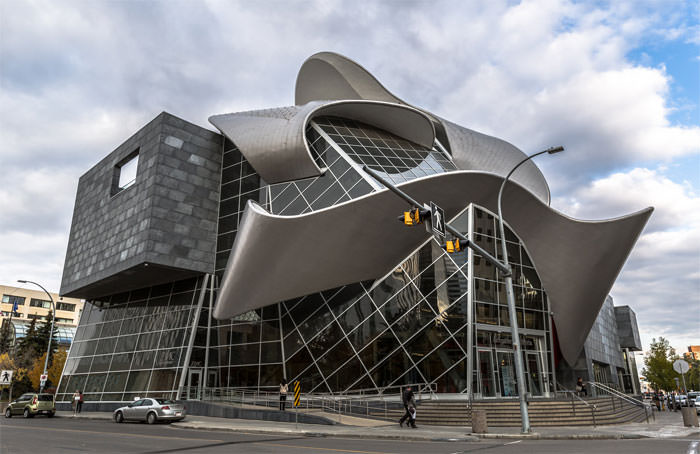
The Art Gallery of Alberta (AGA), situated in the heart of Edmonton, Canada, is a premier cultural institution dedicated to showcasing visual arts from the region and beyond. Established in 1924, the gallery has grown to become a vital part of Alberta's artistic landscape, engaging visitors with its diverse exhibitions, educational programs, and events.
In 2010, the AGA unveiled its newly transformed building, designed by the acclaimed architect Randall Stout. The striking structure, featuring undulating curves and an extensive use of glass and steel, was inspired by the natural beauty of the surrounding landscape, including the North Saskatchewan River and the aurora borealis. The innovative design of the AGA has since become a symbol of Edmonton's vibrant arts scene and a key architectural landmark in the city.
The gallery's collection encompasses over 6,000 works of art, ranging from historical to contemporary pieces, with a particular focus on art from Alberta and Western Canada. Visitors can explore a variety of mediums, including painting, sculpture, photography, printmaking, and installations, created by both established and emerging artists. The AGA also features works by notable Canadian and international artists, further enriching the gallery's diverse offerings.
In addition to its permanent collection, the Art Gallery of Alberta hosts a dynamic array of temporary exhibitions, which often showcase contemporary artists and thought-provoking themes. The gallery also offers a wide range of educational programs, workshops, and events, aimed at engaging and inspiring visitors of all ages.
#15 Ordos Museum, China
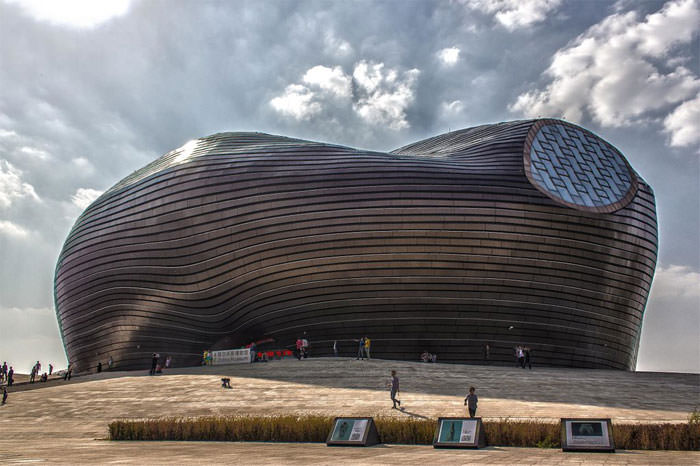
The Ordos Museum, located in Ordos, Inner Mongolia, China, is a striking cultural institution that celebrates the history, art, and heritage of the region. The museum, which opened in 2011, is housed in an iconic, futuristic building designed by the Chinese architectural firm MAD Architects. The structure's curvaceous, dune-like form is inspired by the natural landscape of the surrounding Gobi Desert and represents the dynamic blend of traditional culture and modern development in the region.
The museum's collection focuses on the history and culture of Inner Mongolia, offering visitors a comprehensive insight into the region's rich past and present. The exhibits showcase a wide range of artifacts, including ancient relics, traditional Mongolian art, and contemporary pieces, as well as interactive displays that explore the region's natural environment, biodiversity, and geological features.
In addition to its permanent exhibitions, the Ordos Museum hosts temporary exhibitions that delve into various aspects of Inner Mongolian culture, history, and contemporary life. The museum also offers educational programs and cultural events that engage and inspire visitors of all ages, fostering an appreciation for the region's unique heritage and natural beauty.
#16 Solomon R. Guggenheim Museum, U.S.
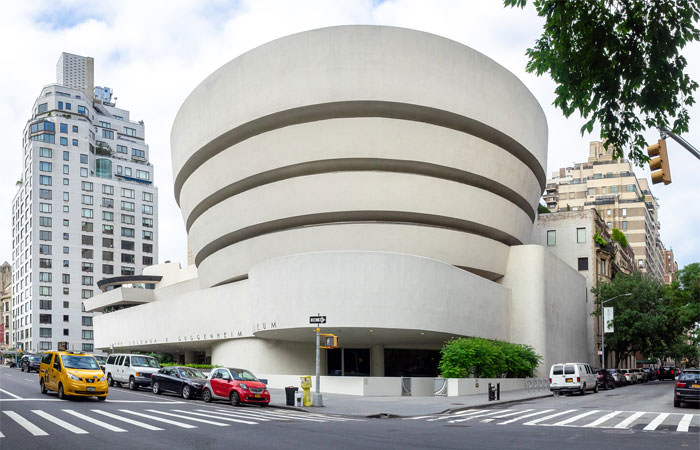
The Solomon R. Guggenheim Museum, situated in New York City, U.S., is a world-renowned cultural institution that has captivated art enthusiasts and architecture lovers alike since its inception. Established in 1939 by Solomon R. Guggenheim, the museum initially showcased his private collection of non-objective art. Over the years, it has grown to encompass a vast array of modern and contemporary artworks, spanning various styles, movements, and mediums.
The Guggenheim's iconic building, designed by the legendary architect Frank Lloyd Wright, is a masterpiece in itself. Opened in 1959, the museum's unique spiral structure, resembling a nautilus shell, invites visitors to experience the collection through a continuous ramp that winds its way upward. The building's innovative design and striking exterior have made it a beloved New York City landmark and a symbol of architectural daring.
The museum's collection comprises works by some of the most significant artists of the 20th and 21st centuries, including Pablo Picasso, Wassily Kandinsky, and Jackson Pollock, as well as contemporary masters like Yayoi Kusama and Danh Vo. The Guggenheim's curatorial vision embraces a wide range of styles, from abstraction and expressionism to pop art and minimalism, offering visitors a diverse and thought-provoking experience.
In addition to its permanent collection, the Guggenheim hosts temporary exhibitions, educational programs, and cultural events that explore various aspects of modern and contemporary art. The museum is also part of the larger Guggenheim Foundation, which operates several other museums around the world, fostering a global dialogue on art and culture.
#17 Andalusia Museum of Memory, Spain
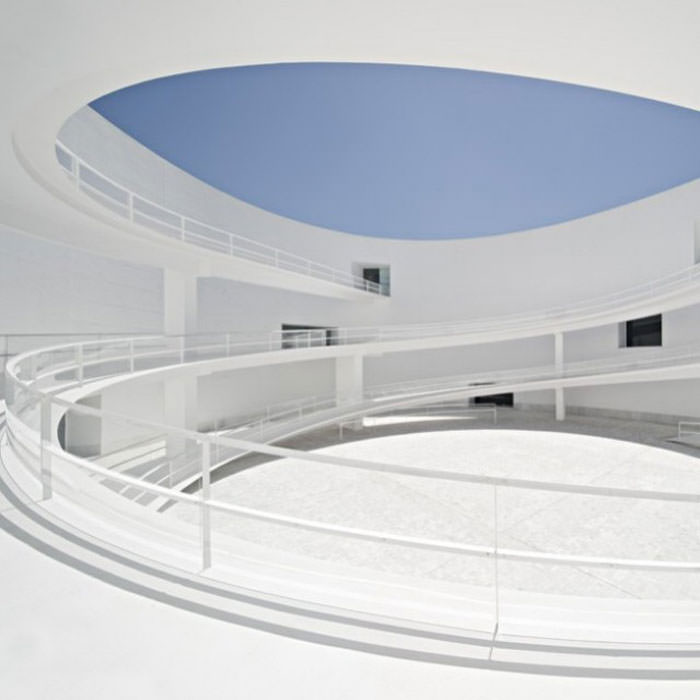
The Andalusia Museum of Memory, situated in Granada, Spain, is a significant cultural institution dedicated to preserving and presenting the rich history, heritage, and collective memory of the Andalusian region. The museum aims to foster a deeper understanding of the region's complex past and its impact on contemporary society, promoting reflection, dialogue, and respect for cultural diversity.
The museum is housed in a beautiful historic building that has been thoughtfully renovated to create a seamless blend of traditional architecture and modern design elements. This synthesis of old and new reflects the museum's mission to explore the intersection of history, culture, and identity in Andalusia.
The Andalusia Museum of Memory features a diverse collection of artifacts, documents, and multimedia exhibits that span various periods in the region's history, from prehistoric times to the present day. Visitors can explore the rich cultural tapestry of Andalusia, including its Iberian, Roman, Visigothic, and Islamic influences, as well as its role in the formation of modern Spain. The museum's exhibitions delve into various aspects of Andalusian society, including politics, economics, religion, and daily life, providing a comprehensive and nuanced understanding of the region's past.
In addition to its permanent collection, the museum hosts temporary exhibitions, educational programs, and cultural events that explore various themes and aspects of Andalusian history and contemporary life. These offerings aim to engage and inspire visitors, fostering a sense of connection to the region's rich heritage and promoting a deeper appreciation for the diverse cultural influences that have shaped it.
#18 Heydar Aliyev Center, Azerbaijan
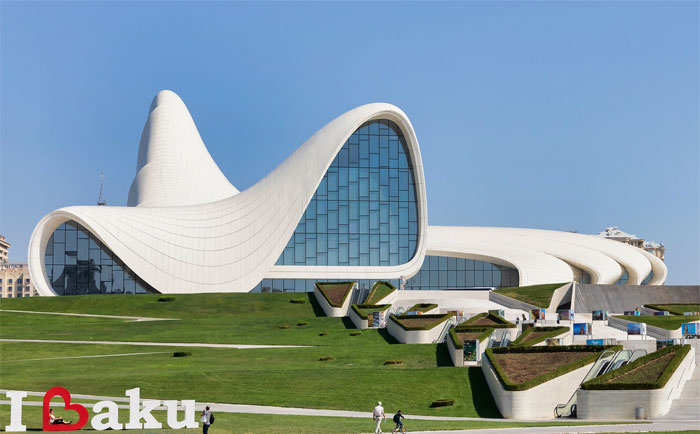
The Heydar Aliyev Center, located in Baku, Azerbaijan, is a stunning cultural institution and architectural marvel that has become a symbol of the country's commitment to modernity, innovation, and progress. Designed by the renowned Iraqi-British architect Zaha Hadid, the building's iconic fluid, curvilinear form is a striking departure from the rigid Soviet-era architecture that once dominated the cityscape. The center, which opened in 2012, serves as a multifunctional space, housing a museum, a conference hall, exhibition spaces, and various other facilities.
The Heydar Aliyev Center is dedicated to the legacy of Azerbaijan's former president Heydar Aliyev, who played a pivotal role in the nation's development and modernization. The museum within the center showcases a comprehensive collection of exhibits, highlighting Aliyev's life, political career, and the history of Azerbaijan. These exhibits provide valuable insights into the country's journey from Soviet rule to its current status as an independent and rapidly developing nation.
In addition to its focus on Azerbaijan's history and political evolution, the Heydar Aliyev Center also hosts a wide range of temporary exhibitions, cultural events, and conferences, showcasing both local and international art, design, and innovation. These offerings highlight the center's commitment to fostering a dialogue between Azerbaijani culture and the global community.
#19 M/S Maritime Museum of Denmark, Denmark
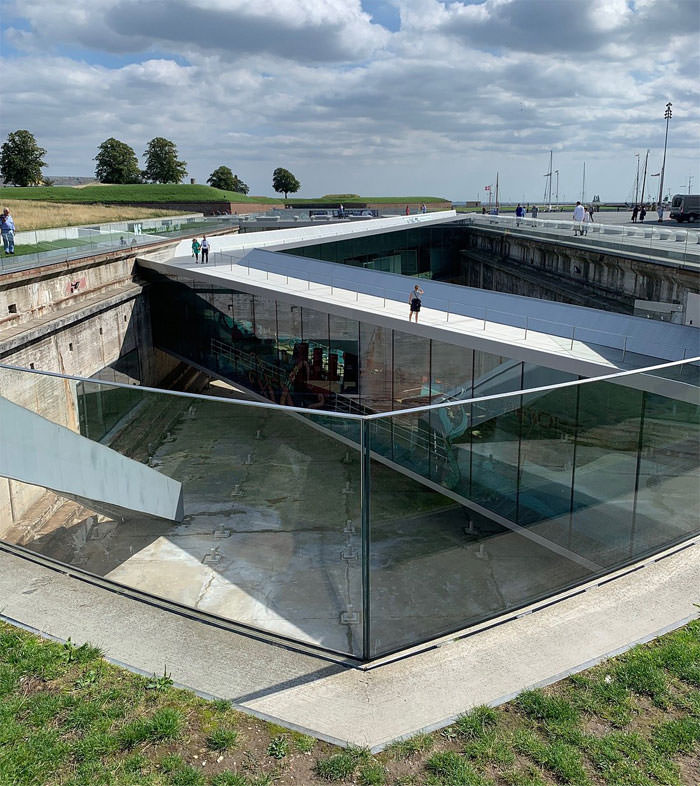
The M/S Maritime Museum of Denmark, located in Helsingør, Denmark, is a captivating cultural institution that celebrates the country's rich maritime heritage and its enduring connection to the sea. Situated near the iconic Kronborg Castle, the museum is housed in an extraordinary architectural masterpiece designed by the renowned Danish architectural firm Bjarke Ingels Group (BIG). Inaugurated in 2013, the museum's innovative design features an underground structure built around a former dry dock, with glass-walled bridges connecting different sections of the museum.
The M/S Maritime Museum of Denmark showcases a vast collection of artifacts, interactive exhibits, and multimedia installations that span several centuries of Danish maritime history. Visitors can explore various aspects of Denmark's seafaring past, including its role in trade, naval warfare, and international relations, as well as the daily lives of sailors and the evolution of maritime technology. The museum's exhibitions delve into both the romantic and challenging aspects of life at sea, providing a comprehensive and engaging experience for visitors of all ages.
In addition to its permanent exhibitions, the M/S Maritime Museum of Denmark hosts temporary exhibitions that focus on specific themes related to maritime culture and history. The museum also offers a wide range of educational programs, workshops, and events aimed at engaging and inspiring visitors, fostering a deeper appreciation for Denmark's maritime heritage.
#20 Niteroi Contemporary Art Museum, Brazil
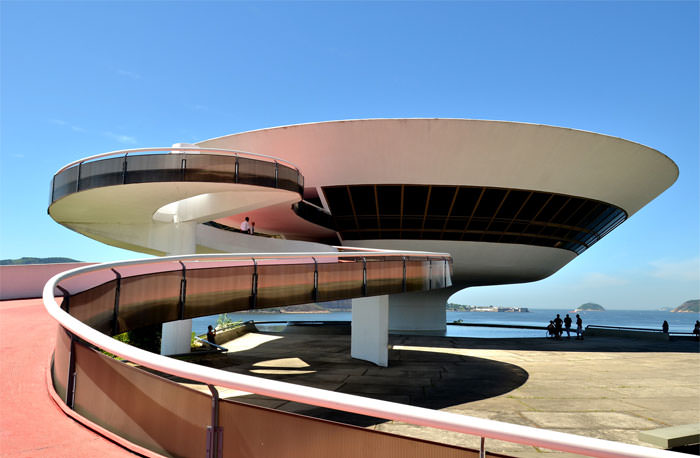
The Niteroi Contemporary Art Museum (MAC), situated in Niteroi, Brazil, is a remarkable cultural institution and architectural icon that celebrates modern and contemporary art. Designed by the legendary Brazilian architect Oscar Niemeyer, the museum's extraordinary building, completed in 1996, features a unique saucer-shaped structure, resembling a UFO, which seems to float above the cliffs overlooking Guanabara Bay.
The museum's stunning location offers breathtaking panoramic views of Rio de Janeiro and its iconic landmarks, such as Sugarloaf Mountain and the Christ the Redeemer statue, creating an unforgettable backdrop for the exploration of contemporary art. Niemeyer's innovative design incorporates a spiraling ramp that leads visitors through the exhibition spaces and further enhances the overall experience.
The Niteroi Contemporary Art Museum's collection showcases an extensive range of modern and contemporary art, primarily focusing on Brazilian artists. The museum features works in various mediums, including painting, sculpture, photography, and multimedia installations, reflecting the diverse and vibrant nature of Brazil's artistic landscape. The museum also hosts temporary exhibitions and cultural events that explore various aspects of contemporary art, both from Brazil and around the world.
In addition to its art exhibitions, MAC Niteroi is home to a lush sculpture garden, a stylish restaurant, and an educational center, providing visitors with a multifaceted cultural experience. The museum's striking architecture and captivating location, combined with its engaging collection, make it an essential destination for art lovers and architecture enthusiasts alike.
#21 Luma Foundation, France
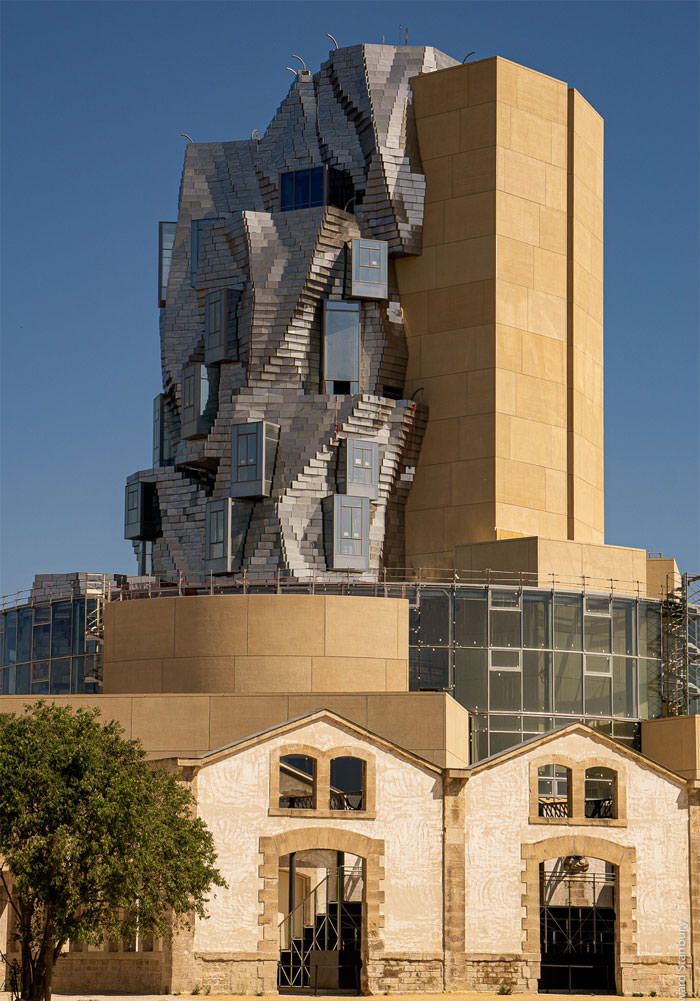
The Luma Foundation, located in Arles, France, is a dynamic cultural institution dedicated to supporting and promoting contemporary art, architecture, and creative disciplines. Established in 2004 by Swiss art collector and philanthropist Maja Hoffmann, the foundation aims to foster dialogue, collaboration, and innovation within the international arts community, with a particular focus on environmental and social issues.
The Luma Arles campus, which officially opened in 2021, is a remarkable architectural achievement that has transformed a former industrial site into a thriving creative hub. The campus features a series of renovated historical buildings, as well as a new, striking tower designed by the renowned architect Frank Gehry. The tower's shimmering, twisting façade, inspired by the region's natural beauty and Vincent van Gogh's famous Starry Night, has quickly become an iconic landmark in Arles.
The Luma Foundation's programming encompasses a diverse range of exhibitions, artist residencies, workshops, and events, showcasing both established and emerging talents in the fields of visual arts, design, film, and other creative disciplines. The foundation also hosts the prestigious annual Rencontres d'Arles photography festival, which draws artists, curators, and enthusiasts from around the world.
In addition to its cultural offerings, the Luma Arles campus is home to a research center, an extensive library, a café, and a bookstore, providing visitors with a multifaceted experience that fosters creativity and intellectual exchange. The foundation's commitment to sustainability and environmental stewardship is evident in the site's design, which incorporates innovative eco-friendly technologies and green spaces.
#22 National Museum of African American History and Culture, U.S.
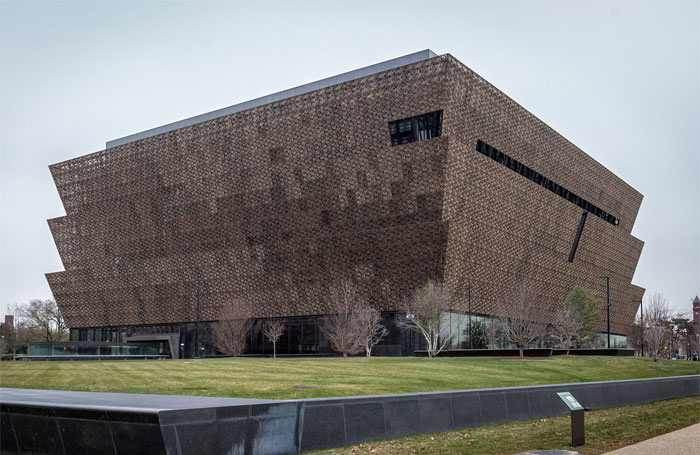
The National Museum of African American History and Culture (NMAAHC), located in Washington, D.C., U.S., is a groundbreaking institution dedicated to preserving, documenting, and celebrating the rich history, culture, and achievements of African Americans. Established in 2003 and opened to the public in 2016, the museum is a part of the Smithsonian Institution and occupies a prominent position on the National Mall.
Designed by a team led by the renowned British-Ghanaian architect Sir David Adjaye, the museum's striking building features a three-tiered, bronze-colored structure inspired by the Yoruban caryatid, a traditional West African column. The intricate exterior pattern, known as the Corona, pays homage to the craftsmanship of African American artisans and creates a captivating interplay of light and shadow within the museum.
The NMAAHC's extensive collection spans over 36,000 artifacts, encompassing a wide range of topics related to African American history and culture, including slavery, civil rights, sports, music, and the visual arts. The museum's thoughtfully curated exhibits guide visitors through a chronological and thematic exploration of African American experiences, providing a comprehensive and poignant narrative that reveals the resilience, strength, and contributions of African Americans to the nation.
In addition to its permanent exhibitions, the NMAAHC hosts temporary exhibitions, educational programs, and cultural events that delve into various aspects of African American history, culture, and contemporary life. The museum's offerings aim to engage and inspire visitors of all backgrounds, fostering a deeper understanding of the African American experience and its crucial role in shaping the United States.
#23 Museum aan de Stroom, Belgium
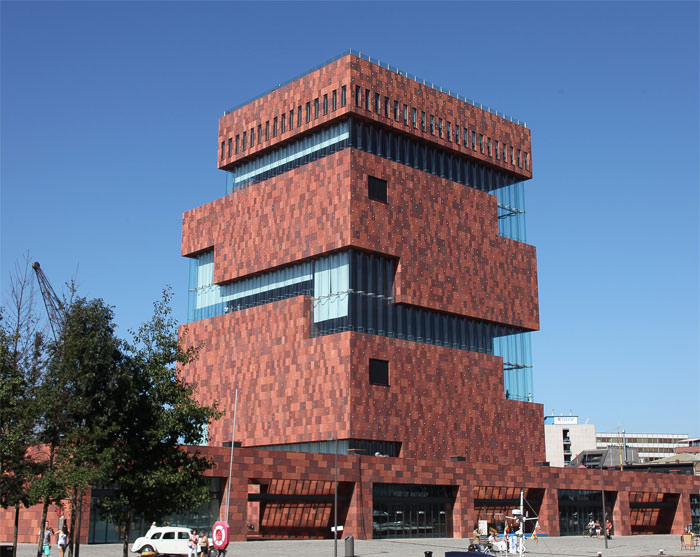
The Museum aan de Stroom (MAS), located in Antwerp, Belgium, is a remarkable cultural institution that celebrates the city's rich history, its vibrant contemporary life, and its enduring connection to the world. Situated in the Eilandje district, the museum's striking building, designed by the Dutch architectural firm Neutelings Riedijk Architects, has become an iconic landmark since its opening in 2011. The building's unique stacked design, featuring undulating glass panels and red sandstone, resembles a series of giant containers, paying homage to Antwerp's status as a major port city.
The MAS houses an extensive collection of artifacts, artworks, and multimedia installations that span various aspects of Antwerp's history and culture, including its maritime heritage, trade, migration, and urban development. The museum's engaging exhibitions provide visitors with a comprehensive understanding of Antwerp's past and its ongoing evolution as a vibrant, cosmopolitan city.
In addition to its permanent exhibitions, the MAS hosts temporary exhibitions, educational programs, and cultural events that explore various themes related to Antwerp's history and contemporary life. These offerings aim to engage and inspire visitors, fostering a sense of connection to the city and its diverse cultural influences.
One of the highlights of a visit to the MAS is the panoramic view of Antwerp from the museum's rooftop terrace. The terrace is accessible free of charge and offers stunning 360-degree views of the city, the port, and the surrounding area, making it a popular attraction for both locals and tourists.
#24 Royal Ontario Museum, Canada
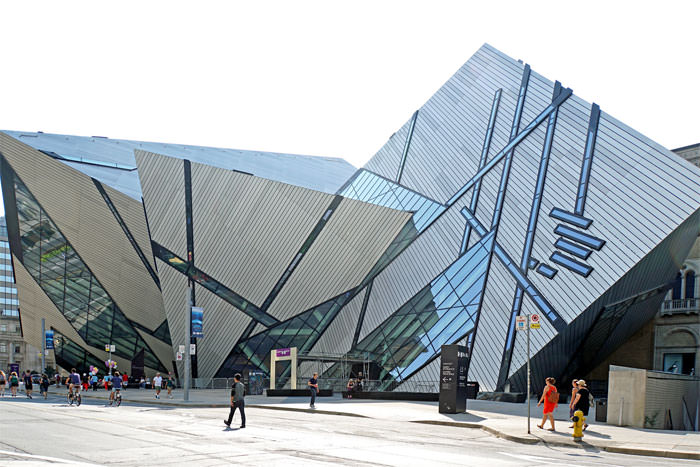
The Royal Ontario Museum (ROM), located in Toronto, Canada, is a world-renowned institution dedicated to preserving and showcasing natural history, art, and culture. Founded in 1912, the museum has evolved into a dynamic cultural hub with a vast collection of over six million artifacts, specimens, and artworks from around the globe.
The museum's extensive collection encompasses a diverse range of disciplines, including natural history, geology, archaeology, and fine arts. The ROM's exhibits highlight the natural and cultural heritage of Canada, as well as various global civilizations, offering a comprehensive understanding of the world's past and present. Visitors can explore the ROM's impressive galleries, which include the Patricia Harris Gallery of Textiles and Costume, the Schad Gallery of Biodiversity, and the James and Louise Temerty Galleries of the Age of Dinosaurs.
In addition to its permanent exhibitions, the ROM hosts temporary exhibitions, educational programs, and cultural events that showcase various themes and aspects of natural and cultural history. These offerings aim to engage and inspire visitors of all ages, fostering a deeper understanding and appreciation of the world's diversity and interconnectedness.
The ROM's striking building, designed by architect Daniel Libeskind, is a modern architectural masterpiece that provides a visually captivating setting for the museum's collection. The iconic "Crystal" addition, completed in 2007, features a series of intersecting glass and aluminum-clad forms, creating a dynamic interplay of light and shadow that has become a popular attraction in its own right.
#25 Museu do Amanhã, Brazil
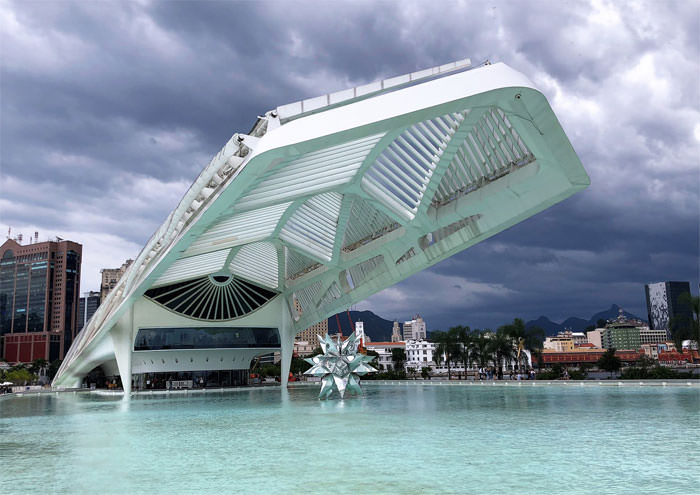
The Museu do Amanhã (Museum of Tomorrow), located in Rio de Janeiro, Brazil, is an innovative cultural institution dedicated to exploring the future of humanity and the planet. Designed by the Spanish architect Santiago Calatrava, the museum's striking building, opened in 2015, features a unique, futuristic design inspired by organic forms found in nature.
The museum's interactive exhibits and multimedia installations explore various themes related to the future, including sustainable development, climate change, technological innovation, and cultural diversity. The museum's programming aims to engage visitors in a dialogue about the challenges and opportunities facing humanity and to inspire a collective effort to create a better future for all.
The Museu do Amanhã's exhibits encourage visitors to reflect on their impact on the environment and society and to explore innovative solutions for a sustainable and equitable future. The museum also hosts cultural events, workshops, and educational programs that promote creativity, critical thinking, and social responsibility.
One of the highlights of a visit to the Museu do Amanhã is the panoramic view of Guanabara Bay from the museum's rooftop terrace. The terrace offers a stunning vista of Rio de Janeiro's iconic landmarks, including Sugarloaf Mountain and the Christ the Redeemer statue.
The Museu do Amanhã provides a unique opportunity to explore the future of humanity within an architecturally stunning and thought-provoking setting. The museum's engaging exhibits, innovative design, and commitment to sustainability and social responsibility make it an essential destination for anyone interested in exploring the challenges and possibilities of the future.
#26 Design Museum Holon, Israel
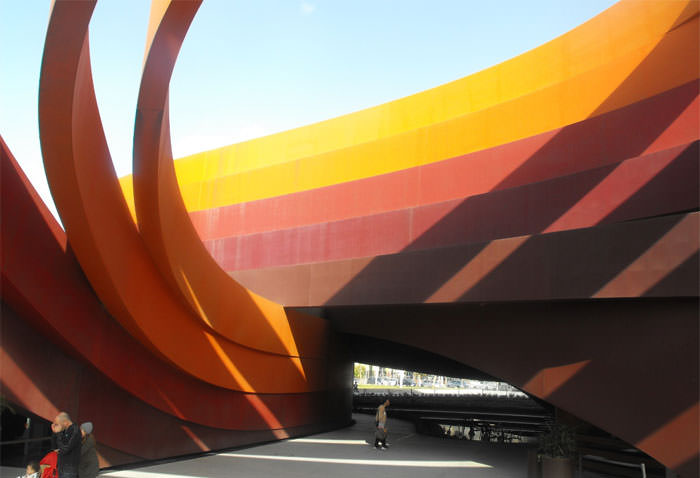
The Design Museum Holon, located in Holon, Israel, is a dynamic cultural institution dedicated to exploring design in all its forms, from fashion and industrial design to architecture and graphic design. Designed by the acclaimed Israeli architect Ron Arad, the museum's striking building, opened in 2010, features an innovative design inspired by organic forms and industrial materials.
The museum's exhibitions showcase various aspects of design, highlighting the creative process, the cultural and social impact of design, and the relationship between design and technology. The museum's collection features a wide range of works by Israeli and international designers, from established icons to emerging talents, providing visitors with a comprehensive understanding of the world of design.
The Design Museum Holon also hosts temporary exhibitions, educational programs, and cultural events that explore various themes related to design, innovation, and creativity. The museum's offerings aim to engage visitors of all ages and backgrounds, inspiring a deeper appreciation for design and its potential to shape the world we live in.
In addition to its cultural offerings, the museum's building is itself a work of art, providing visitors with a visually stunning and immersive experience. The building's curved, fluid forms and industrial materials create an architectural marvel that has become a landmark in Holon.
#27 V&A Dundee, Scotland
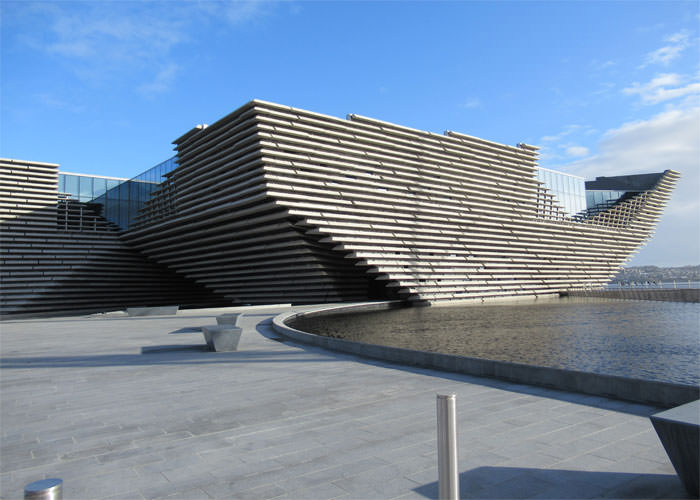
The V&A Dundee, located in Dundee, Scotland, is a world-class cultural institution dedicated to design and creativity. Opened in 2018, the museum is part of the Victoria and Albert Museum network and is the first V&A museum located outside of London.
The museum's building, designed by the acclaimed Japanese architect Kengo Kuma, is a striking example of contemporary architecture. Inspired by the cliffs of Scotland's east coast, the building's design features a series of curved concrete walls that resemble the natural landscapes of the region. The museum's interior spaces are bright, spacious, and versatile, providing a unique setting for the museum's exhibitions and events.
The V&A Dundee's exhibitions showcase various aspects of design, from fashion and textiles to product and graphic design, and explore the creative process, the social and cultural impact of design, and the role of design in shaping our future. The museum's collection features a wide range of works, from iconic designs to emerging talents, and includes both Scottish and international designers, providing visitors with a diverse and engaging experience.
In addition to its exhibitions, the museum hosts temporary exhibitions, educational programs, and cultural events that promote creativity and innovation, engaging visitors of all ages and backgrounds. The museum also features a restaurant, a café, and a shop, offering visitors a chance to relax and shop for unique design items.
#28 Soumaya Museum, Mexico
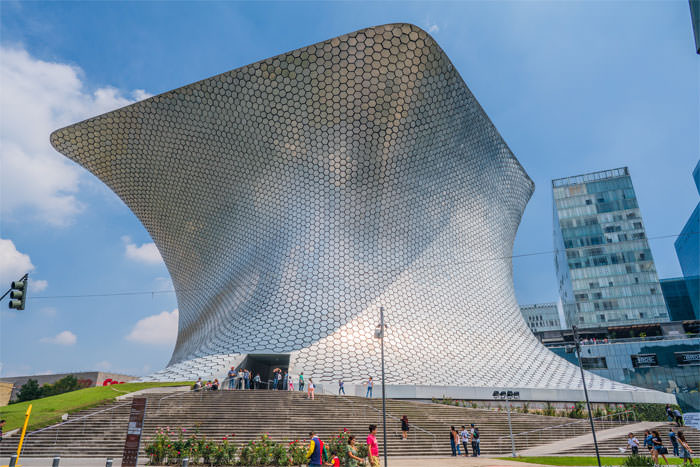
dedicated to art and culture. Opened in 2011, the museum is named after its founder, Carlos Slim Helu's late wife, Soumaya Domit.
The museum's building, designed by the Mexican architect Fernando Romero, is a striking example of contemporary architecture. The building's design features a unique geometric form that resembles an inverted pyramid, and is covered in thousands of hexagonal aluminum tiles that reflect the surrounding cityscape. The museum's interior spaces are bright, spacious, and versatile, providing a unique setting for the museum's exhibitions and events.
The Soumaya Museum's collection features over 66,000 works of art, including paintings, sculptures, and decorative arts from around the world, and spans various periods and styles, from ancient Mesoamerican art to contemporary art. The museum's collection also includes a significant number of works by the famous Mexican artist Diego Rivera, including his iconic painting, "Retrato de Natasha Gelman" ("Portrait of Natasha Gelman").
In addition to its exhibitions, the museum hosts educational programs, cultural events, and temporary exhibitions that engage visitors of all ages and backgrounds. The museum also features a café and a shop, offering visitors a chance to relax and shop for unique art items.
#29 Studio Bell, Canada
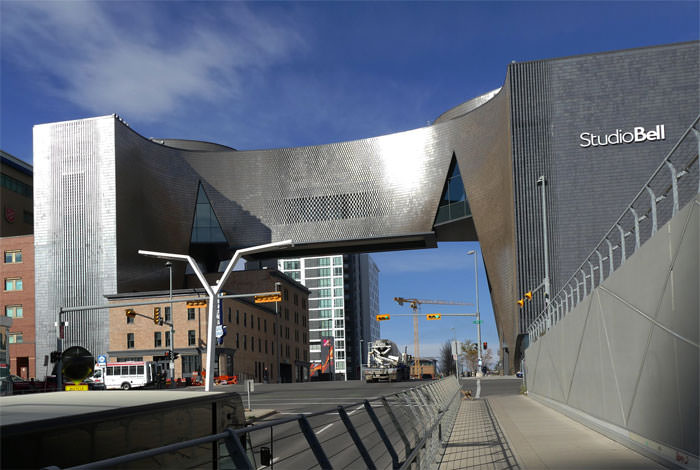
Studio Bell, located in Calgary, Canada, is a dynamic cultural institution dedicated to celebrating Canadian music and sound. Opened in 2016, the museum is home to the National Music Centre, which features a vast collection of musical instruments, artifacts, and memorabilia that span Canada's rich musical history.
The museum's building, designed by the Canadian architectural firm Allied Works, is a striking example of contemporary architecture. The building's design features a unique, angular form that references the prairie landscape, and its façade is made up of over 220,000 aluminum tiles that reflect the surrounding environment.
The Studio Bell's exhibitions showcase various aspects of Canadian music and sound, from indigenous music and folk to rock and pop, and explore the cultural and social impact of music on Canadian society. The museum's collection features a wide range of instruments, from iconic guitars to rare synthesizers, as well as personal items from famous Canadian musicians, providing visitors with a comprehensive understanding of Canada's musical heritage.
In addition to its exhibitions, the Studio Bell hosts concerts, workshops, educational programs, and cultural events that promote musical creativity and innovation, engaging visitors of all ages and backgrounds. The museum also features a café and a shop, offering visitors a chance to relax and shop for unique music-related items.
#30 Neue Nationalgalerie, Germany
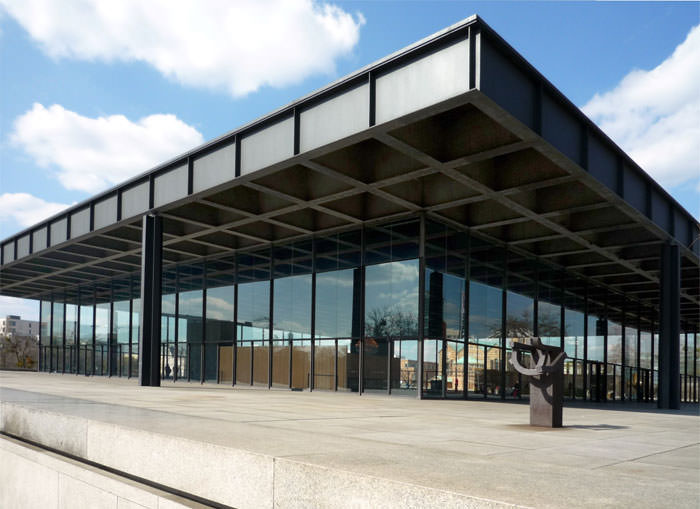
The Neue Nationalgalerie, located in Berlin, Germany, is a modern art museum dedicated to showcasing 20th-century art from Germany and around the world. Designed by the renowned German architect Ludwig Mies van der Rohe and opened in 1968, the museum's building is a masterpiece of modern architecture and a landmark of the Berlin cultural scene.
The Neue Nationalgalerie's collection features an impressive selection of modern art, including paintings, sculptures, and works on paper, that highlight the artistic movements of the 20th century, such as Expressionism, Cubism, and Surrealism. The museum's collection also includes works by some of the most important artists of the 20th century, including Pablo Picasso, Joan Miró, Max Beckmann, and Andy Warhol.
The museum's architecture is a major attraction in its own right, with its elegant steel and glass structure and minimalist design embodying the principles of modernism. The museum's galleries are spacious and light-filled, providing a serene and contemplative atmosphere that complements the artworks on display.
In addition to its permanent collection, the Neue Nationalgalerie hosts temporary exhibitions, educational programs, and cultural events that explore various themes and aspects of modern art. The museum's offerings aim to engage and inspire visitors, fostering a deeper appreciation for modern art and its relevance to contemporary culture.
#31 Hanoi Museum, Vietnam
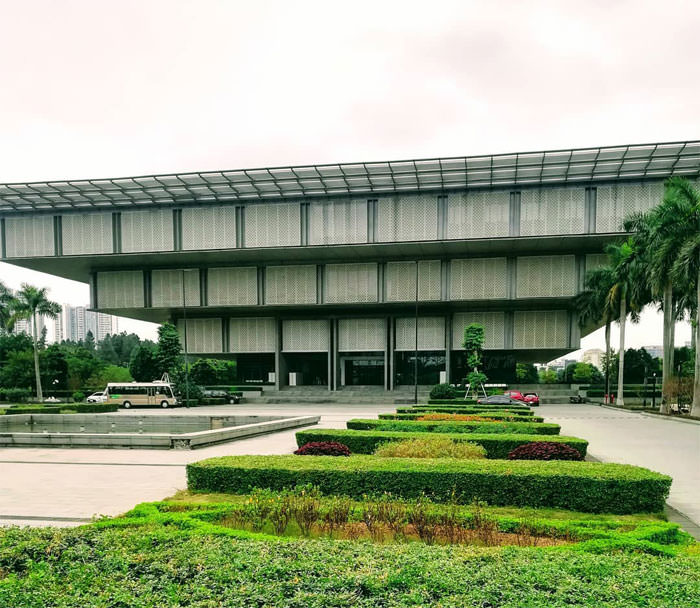
The Hanoi Museum, located in Hanoi, Vietnam, is a dynamic cultural institution dedicated to the history and culture of Vietnam's capital city. Opened in 2010, the museum's building, designed by the German architect von Gerkan, Marg, and Partners, is a modern architectural masterpiece that reflects the city's unique blend of traditional and modern influences.
The museum's exhibits showcase various aspects of Hanoi's rich history, culture, and traditions, highlighting the city's unique identity as a cultural and political center of Vietnam. The museum's collection features over 50,000 artifacts, including paintings, sculptures, ceramics, photographs, and documents, that span from ancient times to the present day, providing visitors with a comprehensive understanding of Hanoi's past and present.
The Hanoi Museum's architecture is also a major attraction, with its striking design featuring a series of interconnected buildings that resemble an inverted pyramid. The museum's interior spaces are spacious and airy, providing visitors with a serene and contemplative atmosphere that complements the artworks and artifacts on display.
In addition to its exhibitions, the Hanoi Museum hosts cultural events, educational programs, and temporary exhibitions that engage visitors of all ages and backgrounds, fostering a deeper appreciation for Hanoi's cultural heritage and its relevance to contemporary Vietnam. The museum also features a café and a shop, offering visitors a chance to relax and shop for unique cultural items.
#32 Denver Art Museum, U.S.
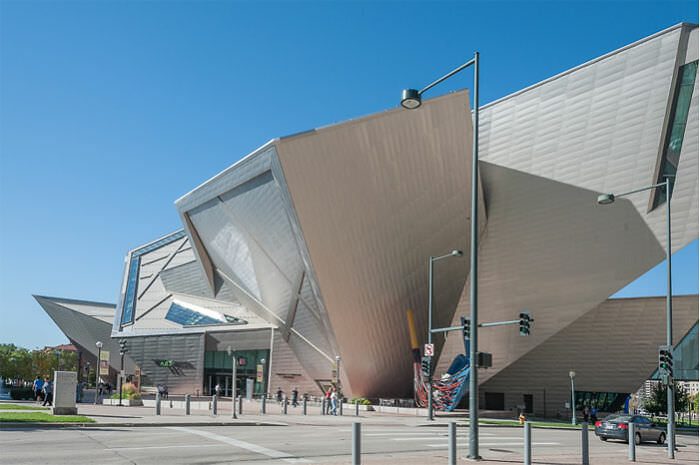
The Denver Art Museum, located in Denver, Colorado, is a world-class cultural institution dedicated to art and creativity. Founded in 1893, the museum's collection features over 70,000 works of art from around the world, spanning various periods and styles, from ancient art to contemporary art.
The museum's architecture is a major attraction in its own right, with its striking design featuring a series of interconnected buildings designed by various architects, including Gio Ponti, Daniel Libeskind, and David Adjaye. The museum's interior spaces are spacious and versatile, providing a unique setting for the museum's exhibitions and events.
The Denver Art Museum's exhibitions showcase various aspects of art and creativity, including paintings, sculptures, decorative arts, and textiles, and explore the cultural and social impact of art on society. The museum's collection includes works by famous artists such as Vincent van Gogh, Pablo Picasso, and Georgia O'Keeffe, as well as works by emerging artists from around the world.
In addition to its exhibitions, the museum hosts educational programs, cultural events, and temporary exhibitions that engage visitors of all ages and backgrounds, inspiring creativity, critical thinking, and social responsibility. The museum also features a café and a shop, offering visitors a chance to relax and shop for unique art-related items.
#33 Centre Georges Pompidou, France
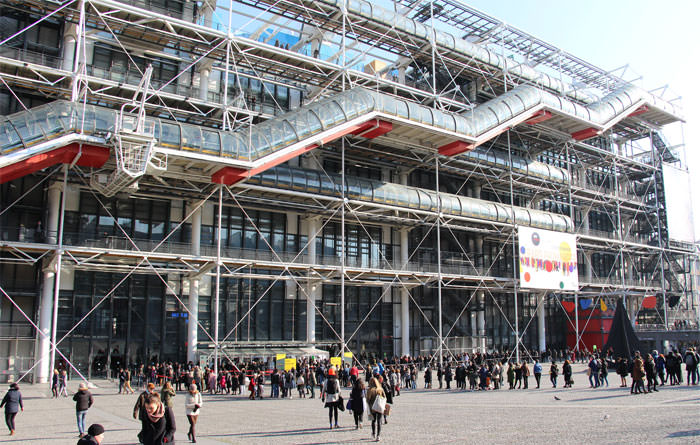
The Centre Georges Pompidou, located in Paris, France, is a renowned cultural institution dedicated to modern and contemporary art, design, and culture. Opened in 1977, the museum is named after Georges Pompidou, the President of France who commissioned the building of the museum.
The museum's architecture is a major attraction, with its striking design featuring a unique, colorful exterior that reflects the building's function as an innovative cultural institution. Designed by the architects Renzo Piano and Richard Rogers, the museum's interior spaces are spacious, flexible, and open, providing a unique setting for the museum's exhibitions and events.
The Centre Georges Pompidou's collection features over 120,000 works of art, including paintings, sculptures, installations, and videos, that highlight the artistic movements of the 20th and 21st centuries, from Surrealism and Pop Art to contemporary art. The museum's collection also includes a significant number of works by French artists, including Henri Matisse, Georges Braque, and Pierre Bonnard.
In addition to its exhibitions, the Centre Georges Pompidou hosts educational programs, cultural events, and temporary exhibitions that engage visitors of all ages and backgrounds, inspiring creativity, critical thinking, and social responsibility. The museum also features a library, a cinema, and a restaurant, offering visitors a chance to relax and immerse themselves in the cultural scene of Paris.
#34 Louis Vuitton Foundation, France
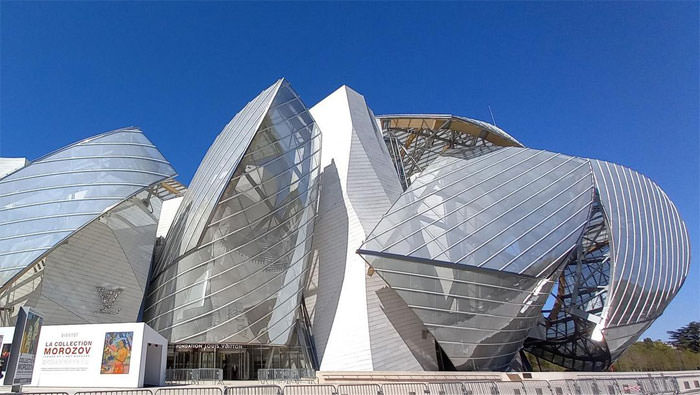
The Louis Vuitton Foundation, located in Paris, France, is a unique cultural institution dedicated to contemporary art and culture. Opened in 2014, the museum is housed in a stunning glass building designed by the renowned architect Frank Gehry, and is a landmark of the Parisian cultural scene.
The museum's architecture is a major attraction in its own right, with its striking design featuring a series of interlocking glass panels that create a harmonious and dynamic space. The museum's interior spaces are spacious, light-filled, and versatile, providing a unique setting for the museum's exhibitions and events.
The Louis Vuitton Foundation's collection features a wide range of contemporary artworks, from paintings and sculptures to installations and performances, and highlights the artistic movements of the 21st century. The museum's collection includes works by famous artists such as Jeff Koons, Takashi Murakami, and Gerhard Richter, as well as emerging artists from around the world.
In addition to its exhibitions, the Louis Vuitton Foundation hosts educational programs, cultural events, and temporary exhibitions that engage visitors of all ages and backgrounds, inspiring creativity, critical thinking, and social responsibility. The museum also features a restaurant, a café, and a shop, offering visitors a chance to relax and shop for unique art-related items.
#35 MAXXI National Museum, Italy
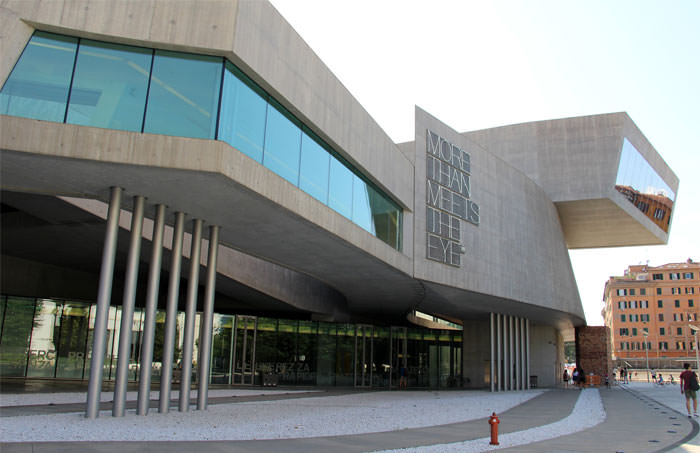
MAXXI National Museum, located in Rome, Italy, is a contemporary art and architecture museum that celebrates the cutting-edge creativity of the 21st century. Opened in 2010, the museum's building was designed by the famous architect Zaha Hadid and is a modern architectural masterpiece that reflects the museum's mission to showcase innovative art and design.
The museum's exhibitions showcase various aspects of contemporary art and architecture, from paintings and sculptures to installations and multimedia works, and explore the cultural and social impact of art on society. The museum's collection includes works by both Italian and international artists, and features an impressive selection of contemporary art and architecture.
In addition to its exhibitions, the MAXXI National Museum hosts educational programs, cultural events, and temporary exhibitions that engage visitors of all ages and backgrounds, inspiring creativity, critical thinking, and social responsibility. The museum also features a library, a café, and a shop, offering visitors a chance to relax and shop for unique art-related items.
The MAXXI National Museum's architecture is also a major attraction, with its fluid lines and futuristic design providing a unique and inspiring setting for the museum's exhibitions and events. The museum's interior spaces are bright, spacious, and versatile, providing visitors with a unique and immersive experience that complements the artworks on display.
#36 Museu de Arte do Rio, Brazil
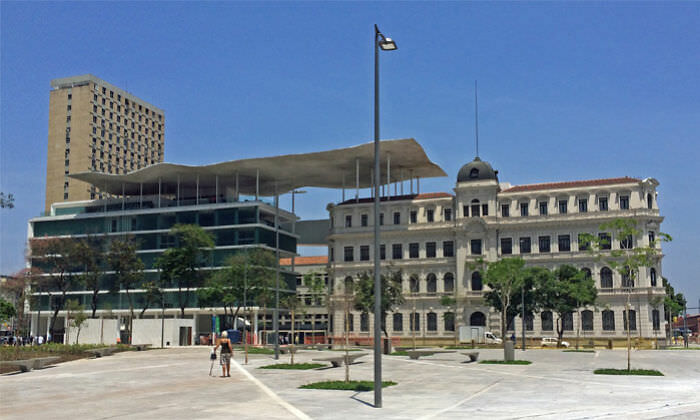
Museu de Arte do Rio, also known as MAR, is a dynamic cultural institution located in Rio de Janeiro, Brazil, dedicated to showcasing the artistic and cultural heritage of the city and its surroundings. Opened in 2013, the museum is housed in a historic building that has been beautifully restored, creating a unique and inspiring space for the museum's exhibitions and events.
The museum's exhibitions showcase various aspects of the art and culture of Rio de Janeiro, from traditional folk art to contemporary art and multimedia installations. The museum's collection features a wide range of artworks, including paintings, sculptures, photographs, and videos, that highlight the cultural and social significance of Rio de Janeiro's artistic traditions.
In addition to its exhibitions, the Museu de Arte do Rio hosts educational programs, cultural events, and temporary exhibitions that engage visitors of all ages and backgrounds, inspiring creativity, critical thinking, and social responsibility. The museum also features a café and a shop, offering visitors a chance to relax and shop for unique art-related items.
The Museu de Arte do Rio's location in the historic neighborhood of Porto Maravilha provides visitors with a unique opportunity to explore the cultural and architectural heritage of Rio de Janeiro. The museum's architecture also reflects this heritage, with its combination of the historic and modern elements creating a visually stunning and thought-provoking setting for the museum's exhibitions and events.



